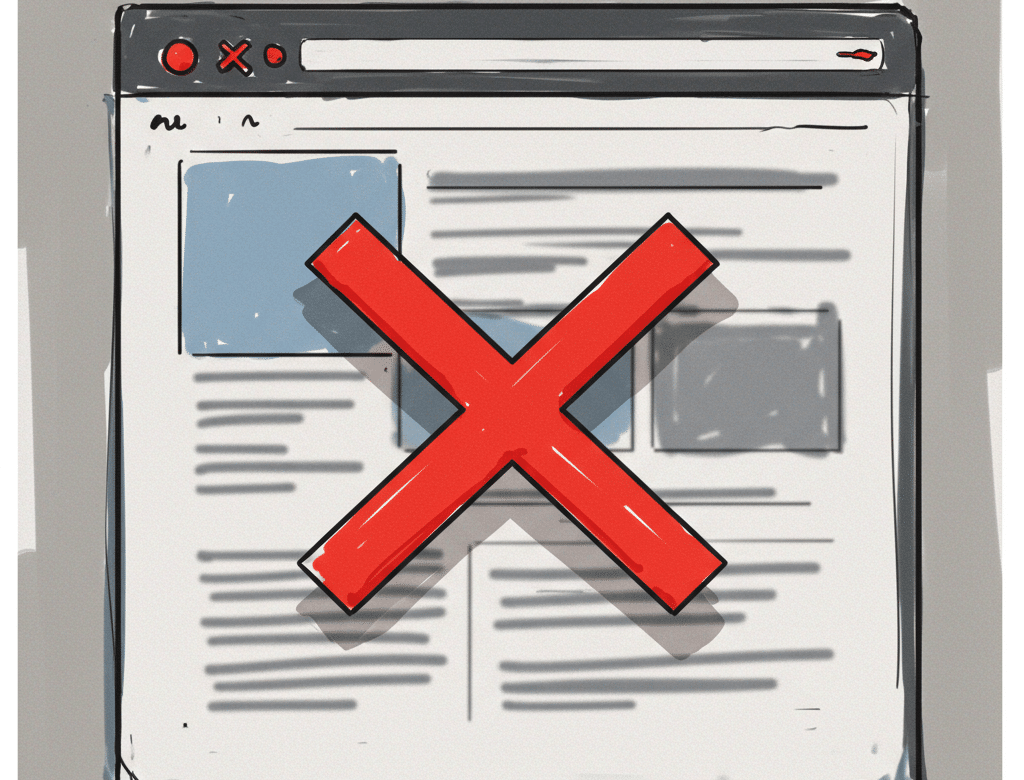Günümüzde bir çok kullanıcı en az bir defa Google Haritalar üzerinden bir konumu aramıştır. Bu aramalar sırasında kimi zaman hedefimiz yol tarifi almaktı kimi zamansa sadece bir yerin konumunu görüntülemek olmuştur. Ancak Google Haritalar bize ihtiyaçlarımızdan çok daha fazlasını sağlayan önemli bir platformdur. Peki Google Haritalar’ın bize sağladığı ve onu bu kadar önemli yapan şey nedir? Bu şey Google Haritalar’ın reklam yayınlamak için mükemmel bir platform olmasıdır. Bu yazımızda sizlere adım adım Google Haritalar’da nasıl reklam vereceğinizi, Google Haritalar’da reklam vermenin neden bu kadar önemli olduğunu ve avantajlarını anlatacağım.
Google Haritalar Nedir?
Google Haritalar isminden de anlaşılacağı üzere Google tarafından geliştirilmiş bir harita uygulamasıdır. Dünya üzerindeki bir çok konumu kullanıcılara sağlayan ücretsiz bir hizmettir. Klasikleşmiş harita uygulamalarına kıyasla bir çok aracı bulunan Google Haritalar aynı zamanda reklamlarınızı yayınlayabileceğiniz en uygun platformlardan birisidir. Google Haritalar’ın bu özelliğinin yerel işletmeler için çok büyük bir ayrıcalık olduğunu söylemem gerekir. Yerel işletmelerin Google Haritalar üzerinden yayınladıkları reklamlarla görünürlük elde ederek potansiyel müşterilere ulaşmaları sadece an meselesidir.
Bir yerel işletmeniz varsa Google Haritalar üzerinde yer almak sizler için bir zorunluluktur diyebiliriz. Günümüz kullanıcılarının mobil cihazlarını yol tarifi almak için sıkça kullandığı bu günlerde, işletmenizin hedef kitlenize ulaşmasının en hızlı yollarından birisinin Google Haritalar’da yer almaktır.
Google Haritalar Reklamları Nedir?
Konunun temellerinden bahsettiğimize göre artık asıl konuya girebiliriz.
Google ADS aracılığıyla, Google Haritalar üzerinden verilen reklam modelidir. Bu reklam modeli genelde iki yöntemle yayınlanır.
- Arama Ağı Reklamları
- Maksimum Performans Reklamları
Yukarıdaki her iki reklam modelinde de Google algoritması belirli bir açık artırma prensibi kullanır. Reklamlarınız belirli faktörlerden (arama ilgisi, açılış sayfası kalitesi, teklif tutarınız vb.) bir sıralama elde eder ve bu sıralamaya göre sayfadaki bir konumda yayınlanır. Bu sayede bir SEO çalışmanız olmasa bile reklamlarınız sayesinde arama sonuçlarının en üst kısmında gözükebilirsiniz. Bu sayede haritalarda sektörünüz hakkında araştırma yapan bir kullanıcının karşısına ilk sıralarda çıkıp, kullanıcı potansiyel müşteri listenize ekleyebilirsiniz.
Google Haritalar’da reklamlar, normal işletmelere kıyasla daha farklı şekillerde gözükürler.
- Özel Pinler (Kare şeklindeki özel pinler, logonuzun olduğu pinler vb.)
- Mağaza İçi Promosyonlar
- Daha Detaylı İşletme Listeleri
- Yerel Envanter Reklamları
Google Haritalar Reklamları Nasıl Verilir?
“Google harita reklamı nasıl verilir?” sorusunun cevabı, adım adım kapsamlı bir süreci içerir. Google Ads üzerinden reklam vermek, teknik olarak basit olsa da stratejik açıdan dikkat edilmesi gereken noktalar vardır. Şimdi bu süreci adım adım inceleyelim:
1. Google Benim İşletmem Hesabı Oluşturma ve Google Ads İle Bağlama
Adım 1: Google Benim İşletmem Hesabı Oluşturma
Google Haritalar’da görünür olmak için öncelikle işletmenizin bir Google Benim İşletmem hesabına sahip olması gerekir. Bunu yapmak için:
- Google My Business Sayfasına Gidin: Google My Business adresine gidin ve “Şimdi yönet” butonuna tıklayın.

- İşletmenizi Ekleyin: İşletmenizin adı, adresi, telefon numarası, kategori ve hizmet saatlerini ekleyin.
- Doğrulama: İşletme bilgilerini tamamladıktan sonra, Google doğrulama isteyecektir. Posta kartı, telefon veya e-posta yoluyla doğrulama yapabilirsiniz.
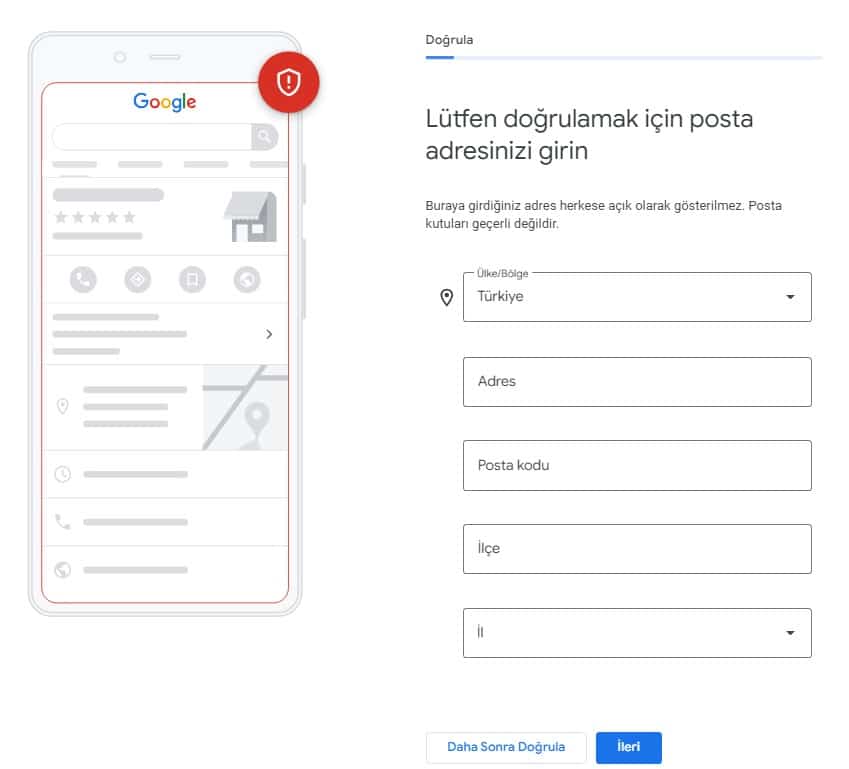
Adım 2: Google My Business Hesabını Google Ads’e Bağlama
Google Benim İşletmem hesabınızı Google Ads ile bağlayarak reklamlarınızın Google Haritalar’da gösterilmesini sağlayabilirsiniz:
- Google Ads Hesabınıza Giriş Yapın: Google Ads hesabınıza giriş yapın.

- Uzantılar Menüsüne Gidin: Google Ads panelinde, sol sütunda bulunan “Kampanyalar” sekmesine tıklayın ve ardından “Öğeler” bölümüne geçin.

- Konum Uzantısı Ekle: “Uzantı Türü” sekmesinden “Konum Uzantısı” seçeneğini seçin. Ardından Google My Business hesabınızı bağlamak için mavi “+” butonuna tıklayın. Bu işlem işletmenizin konum bilgilerinin Google ADS kampanyalarınızda görünmesini sağlayacaktır. Google My Business hesabınızın bağlı olduğu mail adresine bir izin/onay bağlantısı gelecektir. Bu izni verin/onaylayın.

2. Google Ads Üzerinden Kampanya Oluşturma
Kampanya oluşturma süreci, reklam türüne göre değişiklik gösterebilir. İlk olarak, “Google Benim İşletmem” kurulumunu yaptık şimdiyse arama ağı ve maksimum performans kampanyalarının farklı kurulum süreçlerini inceleyelim.
A) Google Haritalar’da Arama Ağı Reklamları Nasıl Verilir?
Adım 1: Kampanya Oluşturma
- Yeni Kampanya Oluştur: Google Ads hesabınıza giriş yaptıktan sonra, sol taraftaki “Kampanyalar” sekmesinde “+” butonuna tıklayın ve “Yeni Kampanya” seçeneğini seçin.

- Kampanya Hedefi Seçin: “Web Sitesi Trafiği” , “Satışlar” veya “Hedef Kılavuzu olmadan bir kampanya oluşturun” gibi hedeflerden birini seçin.
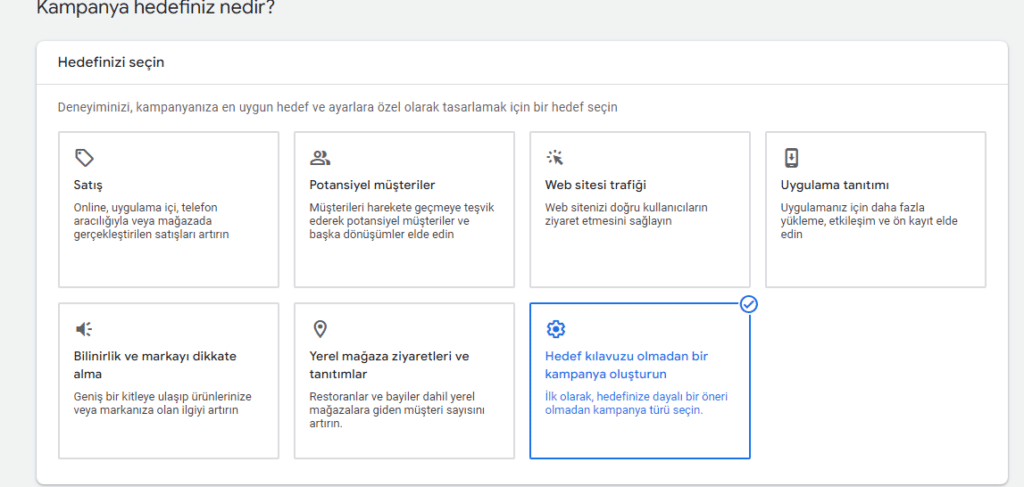
- Kampanya Türü: Arama Ağı’nı seçin (Search Network).

Adım 2: Teklif Stratejisi Seçimi
Arama ağı kampanyalarında farklı teklif stratejileri mevcuttur:
- Dönüşümleri Maksimize Etme: Bütçeniz dahilinde en fazla dönüşümü hedefler, otomatik teklif verir.
- Target CPA (Hedef Dönüşüm Başına Maliyet): Kampanyayı belirlediğiniz dönüşüm maliyeti hedefine göre optimize eder.
- Dönüşüm Değerini Maksimize Etme: Dönüşüm başına elde edilen toplam değeri artırmayı amaçlar.
- Target ROAS (Hedef Reklam Harcama Getirisi): Harcadığınız her reklam bütçesinden elde ettiğiniz getiriyi maksimuma çıkaran bir strateji.
- Maksimum Tıklama Sayısı: Bütçenizle en fazla tıklamayı almayı sağlar.
- Gösterim Payı Hedefi: Reklamlarınızın ne kadar sıklıkla görüneceğini optimize eder.
- Manuel CPC: Bu strateji ilk reklam kurulumunda gözükmez. Daha sonra kampanya ayarlarından değiştirebilirsiniz. Her tıklama için belirlediğiniz maksimum ücreti elle ayarlayabilirsiniz. Daha sonrasında bu stratejiyi eCPC olarak geliştirebilirsiniz.
- Geliştirilmiş CPC (eCPC): Dönüşüm sağlama olasılığı yüksek olan tıklamalar için fiyat teklifini otomatik artırıp azaltan bir strateji. (Bu teklif stratejisi Mart 2025 tarihine kadar tamamen kaldırılacak)

Adım 3: Konum Ayarları ve Diğer Ayarlar
- Kampanya Ayarları: Reklamlarınızın görüntüleneceği ağları, dil seçeneklerinizi, hedef kitlelerinizi ve reklam zamanlaması gibi diğer kampanya ayarlarını yapın.
- Konum Hedefleme: “Konum” sekmesinden, reklamlarınızın hangi bölgelerde gösterileceğini seçin. Türkiye’de yerel hedefleme yapmak istiyorsanız, şehirlere veya bölgelere göre hedefleme yapabilirsiniz. Ancak dikkat etmeniz gereken bir şey var. Eğer reklamlarınızı yerel bir bölgede yayınlamak istiyorsanız konum ayarlarınızı daraltın.
Yarıçap konum seçeneğini kullanarak belirli bir dairesel alanı hedefleyebilirsiz.
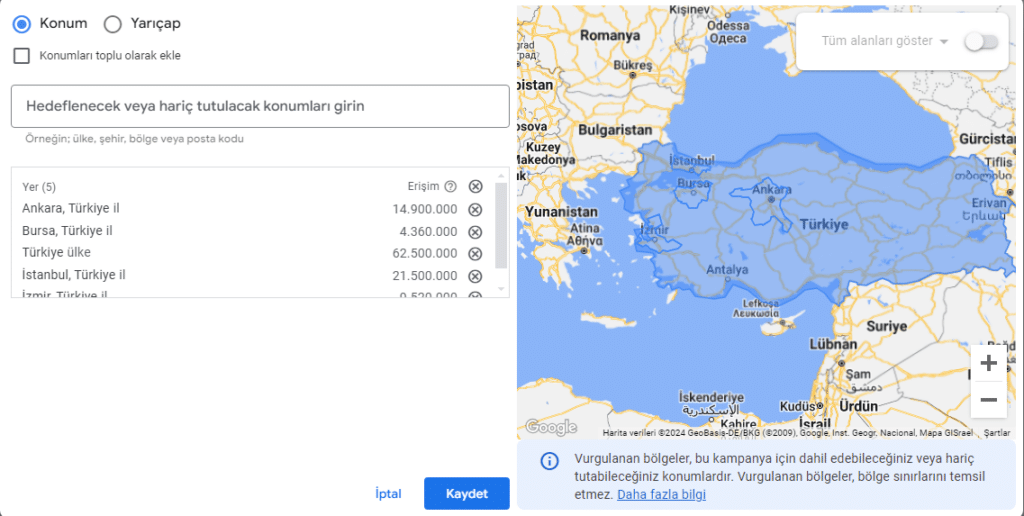
Adım 4: Anahtar Kelime Seçimi
Arama ağı reklamlarında, reklamlarınızın hangi anahtar kelimeler ile görüneceğini seçmeniz gerekir:
- Anahtar Kelime Araştırması: İşletmenizin hizmetlerine uygun anahtar kelimeleri belirleyin. Google’ın anahtar kelime planlayıcısını kullanarak popüler aramaları bulabilirsiniz veya SEMrush, Ahrefs gibi sitelerle ücretli olarak daha detaylı bir arama yapabilirsiniz.
Alttaki görselde “Google Anahtar Kelime Planlayıcı” aracına yer verdim. Bu araca erişmek için soldaki sütundan “Araçlar” sekmesine tıklayıp, “Planlama” bölümünü genişletiyoruz ve “Anahtar Kelime Planlayıcı” bölümüne tıklıyoruz. Daha sonra “Yeni anahtar kelimeler keşfedin” butonuna tıklayarak, ister bir site bağlantısı ekleyerek istersek de kelimelerle anahtar kelime fikirleri alıyoruz.
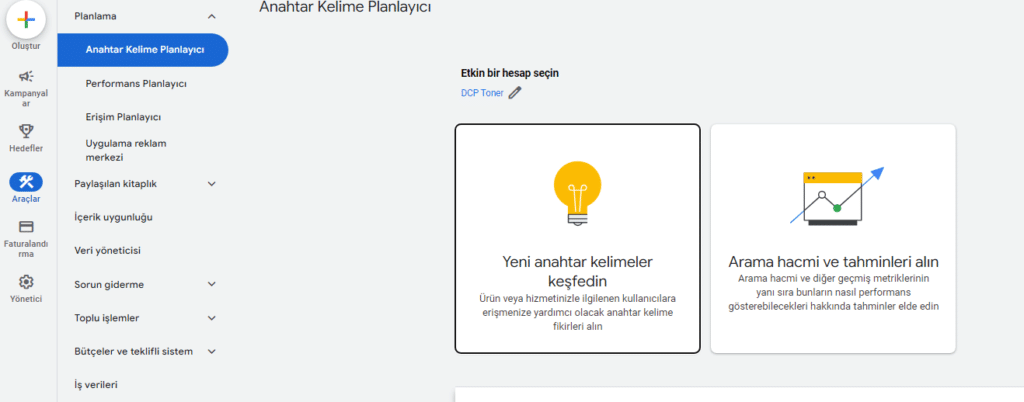
- Anahtar Kelime Türleri: Geniş eşleme, tam eşleme ve sıralı eşleme türleriyle anahtar kelimeleri ayarlayın. Anahtar kelimelerinizin gösterileceği kitlenin genişliğini belirlemede eşleme türleri kilit bir rol oynar.

Adım 5: Reklam Metinlerini Oluşturma
Başlık ve Açıklama: Etkileyici başlıklar ve kısa, öz açıklamalar oluşturun. Reklamınızın kullanıcılara değer önerisi sunması çok önemlidir.


Reklam Önizlemesi: Reklamın nasıl göründüğünü önizleme ile kontrol edin ve ardından yayına alın. Önizlemeyi hem telefon hem de bilgisayar için yapmayı unutmayın.

Yer Uzantısı: “Diğer öğe türleri” butonuna tıklayarak “Yer” uzantınızın ekli olup olmadığını kontrol ediniz. Eğer herhangi bir konum bağlantısı gözükmüyorsa, Google Benim İşletmem profilinizden Google ADS bağlantısını onaylayıp onaylamadığınızı kontrol ediniz. Eğer hesapları birbirine bağlama adımını atladıysanız yeni bir sekme açıp bu bağlantıyı ekleyin ve reklam yayınlama işlemine devam ediniz.

B) Google Haritalar’da Maksimum Performans Reklamı Nasıl Verilir?
Adım 1: Kampanya Oluşturma
- Yeni Kampanya Oluştur: Google Ads panelinden “+Yeni Kampanya” butonuna tıklayın.

- Kampanya Hedefi Seçin: Yerel mağaza ziyaretleri ve tanıtımlar hedefini seçin.

- Kampanya Türü: Maksimum Performans (Performance Max) kampanyasını seçin.

Adım 2: Teklif Stratejisi Seçimi
Maksimum Performans kampanyalarında otomatik teklif stratejileri kullanılır:
- Dönüşümleri Maksimize Etme: Bütçeniz dahilinde en fazla dönüşümü hedefler, otomatik teklif verir.
- Target CPA (Hedef Dönüşüm Başına Maliyet): Kampanyayı belirlediğiniz dönüşüm maliyeti hedefine göre optimize eder.
- Dönüşüm Değerini Maksimize Etme: Dönüşüm başına elde edilen toplam değeri artırmayı amaçlar.
- Target ROAS (Hedef Reklam Harcama Getirisi): Harcadığınız her reklam bütçesinden elde ettiğiniz getiriyi maksimuma çıkaran bir strateji.

Adım 3: Konum ve Hedef Kitle Ayarları
- Konum Hedefleme: Konum ayarlarınız Google Benim İşletmem aracılığıyla sağlanacak.

Adım 4: Reklam Öğeleri ve İçerik Oluşturma
- Reklam Öğeleri Ekleyin: Görseller, videolar ve metinleri ekleyin. Maksimum Performans kampanyası tüm Google platformlarında görünür olduğu için çok çeşitli reklam formatları kullanabilirsiniz.



- Hedef Kitle: Maksimum Performans kampanyalarında anahtar kelime yerine hedef kitleler kullanılır. İlgili kitleler veya yeniden pazarlama kitleleri belirleyebilirsiniz. Kitle Sinyali bölümünden hedef kitlelerinizi eklemek isterseniz ekleyebilirsiniz.

- Arama Temaları: Henüz Beta olan bir özellik ancak arama temaları Google’ın yapay zekasına müşterilerinizin neler aldığı ve hangi konuların işletmeniz için dönüşümle sonuçlandığı hakkında değerli bilgiler sağlamanıza olanak tanır. Aslında anahtar kelime temaları için maksimum performans reklamlarının anahtar kelimeleri diyebiliriz.

Google Haritalar Reklamlarının Avantajları
Google Haritalar’da reklam vermek işletmenizi bir adım öne taşır. Bunun başlıca sebebi konumu esas alan Google algoritmalarının yerel hedefleme yaparak sizi arama yapan yakındaki kullanıcıların karşısına, organik sonuçların üstünde göstermesidir. Bu sayede markanızın görünürlüğünü artırırsınız. Google Haritalar kullanıcıları, haritadaki pininiz aracılığıyla doğrudan mağazanızı görsellerini görebilir, iletişim bilgilerinize erişebilir ve potansiyel müşteriniz olabilirler.
Google Haritalar Reklamları, yerel işletmelerin hedef kitlelerine daha hızlı ve etkili bir şekilde ulaşmasını sağlayan güçlü bir araçtır. Günümüzde, yerel aramalar internet kullanıcılarının günlük hayatında büyük bir yer kaplıyor ve işletmenizin bu aramalarda öne çıkması, size önemli bir rekabet avantajı sağlar. Google Haritalar Reklamları vermek, potansiyel müşterilerin sizi kolayca bulmasını sağlayarak, işletmenizin görünürlüğünü artırır.
Yerel Hedefleme:
Google Haritalar reklamları hedeflediği , belirli bir bölgeyi hedeflediği için, işletmeniz hizmet verdiği lokasyonda arama yapan kişilere doğrudan ulaşır. Yerel aramalar, işletmeler için yüksek dönüşüm oranlarına sahip olduğu için bu reklam modeli son derece etkilidir.
Görünürlük Artışı:
Reklamlar, yerel arama sonuçlarında en üst sırada görünür. Bu da rakiplerinize göre işletmenizin daha fazla dikkat çekmesini sağlar. Özellikle yoğun rekabetin olduğu sektörlerde, Google Haritalar reklamları sayesinde öne çıkmak mümkündür.
Doğrudan Yönlendirme:
Google Haritalar reklamları, işletmenize doğrudan yönlendirme sağlar. Kullanıcılar, harita üzerindeki pine tıkladıklarında, işletmeniz hakkında daha fazla bilgi alabilir ve size kolayca ulaşabilirler.
Müşteri Kazanımı:
Google Haritalar reklamları sayesinde, işletmeniz arama sonuçlarında daha fazla görünür hale gelir ve bu da yeni müşteri kazanımını artırır. Ayrıca, işletmenizin telefon numarası, adresi, ilişkileri ve çalışma saatleri gibi bilgilere kolay erişim sağlanarak müşteri ilişkileri güçlenir.
Google Haritalar Reklamlarının Maliyetleri
Google Haritalar’da reklam verme maliyetleri, kullandığınız teklif stratejisine göre değişiklik gösteren bir reklam modeline dayanır. Eğer “Tıklamaları maksimuma çıkar (Maximize Clicks)” teklif stratejisini kullanıyorsanız. Bir kullanıcı reklamverenin reklamlarından birine tıkladığında maliyetlendirilirsiniz veya “Hedef dönüşüm başına maliyet (CPA)” teklif stratejisini kullanır ve kullanıcılar reklamınıza tıkladıktan sonra seçili bir dönüşüm eylemini gerçekleştirirse, seçmiş olduğun CPA tahsil edilir. Bu maliyetler, işletmenizin bulunduğu bölgeye, sektörünüzdeki rekabet yoğunluğuna ve hedef kitlenize göre değişiklik gösterebilir.
Yoğun nüfuslu bölgelerde ya da rekabetin yüksek olduğu sektörlerde, Google haritalar reklam maliyetleri daha yüksek olabilir. Bununla birlikte günlük bütçenizi ayarlayabilir, böylelikle harcamalarınızı kontrol altında tutabilirsiniz.
Google Haritalar reklamlarının maliyetini belirleyen ana unsurlar arasında sektörünüz, piyasa dinamikleri, kalite puanınız, kullandığınız anahtar kelimeler, belirlediğiniz teklif miktarı ve bütçeniz yer alır. Şimdi bu faktörlere daha yakından bakalım:
- Sektör: Reklam maliyetlerini belirlerken, sektörünüzdeki rekabet düzeyi önemli bir rol oynar. Bazı sektörler, yüksek talep ve yoğun rekabet nedeniyle daha yüksek tıklama veya dönüşüm başına maliyet ile karşı karşıya kalır. Örneğin, finans ya da hukuk gibi sektörlerde reklam vermek daha maliyetli olabilir.
- Piyasa Eğilimleri: Tüketici alışkanlıklarındaki değişiklikler, belirli ürün ya da hizmetlere olan talebin artması ya da mevsimsel dalgalanmalar, reklam maliyetlerini etkileyebilir. Örneğin, yaz aylarında turizm sektöründe reklamların maliyeti artabilir.
- Kalite Puanı: Google, reklamlarınızın ve açılış sayfanızın kalitesine göre bir puan belirler. Kullanıcıya sunduğunuz deneyim ne kadar iyiyse, kalite puanınız o kadar yüksek olur. Yüksek bir kalite puanı, CPC ve CPA’lerinizi düşürebilir ve daha iyi pozisyonlarda daha düşük maliyetle reklam vermenizi sağlayabilir.
- Teklif Stratejisi: Google Haritalar’da reklamlarınızın daha fazla görünmesini istiyorsanız, teklifinizi artırabilirsiniz. Ancak yüksek teklifler, reklam maliyetlerinizi de artırır. Bu yüzden teklif yönetimi dikkatlice yapılmalıdır. Doğru teklif stratejisi, bütçenizle en iyi performansı elde etmenizi sağlar.
- Bütçe Yönetimi: Google Haritalar reklamları için ayırdığınız bütçe, maliyetleri doğrudan belirler. Daha büyük bir bütçe, reklamlarınızın daha fazla gösterim almasına ve daha geniş bir kitleye ulaşmasına olanak tanır. Ancak, reklam bütçenizin verimli kullanılması da önemlidir. Bütçenizi dikkatlice planlayarak, maliyetleri kontrol altında tutabilirsiniz.
Tüm bu faktörler bir araya geldiğinde, Google Haritalar reklamlarının maliyetini tahmin etmek mümkün değildir. Bütçenizi aşmayacak ve sektörden sektöre değişiklik gösterecek maliyetler için kampanya ayarlarınızı dikkatli yapılandırmanız gerekir.
Maliyetlerin, sektörünüz ve teklif stratejiniz gibi faktörlere bağlı olarak önemli ölçüde değişebileceğini unutmamalısınız. İşletmenizin ihtiyaçlarına en uygun maliyet tahmini maliyetler için Google ADS Anahtar Kelime Planlayıcı aracını kullanarak daha net sonuçlar elde edebilirsiniz.
Google Haritalar Reklamlarında Ödeme Modelleri
Google Haritalar reklamları için birkaç farklı ödeme modeli bulunmaktadır. İşletmenizin hedeflerine ve bütçenize en uygun modeli seçmek önemlidir.
Tıklama Başına Maliyet (CPC)
Tıklama Başına Maliyet (CPC), reklamlarınız her tıklandığında ödediğiniz maliyet anlamına gelir. Bu model, özellikle web sitesi trafiğini artırmak ve kullanıcıları harekete geçirmek isteyen işletmeler için etkili bir yöntemdir. CPC modelinin bazı önemli unsurları şunlardır:
Hedefleme ve Optimizasyon: CPC odaklı kampanyalarda, hedef kitlenizi doğru bir şekilde belirlemek oldukça önemlidir. Doğru kitleye ulaşarak reklamlarınızın tıklama oranını artırabilir ve CPC’yi optimize edebilirsiniz.
Bütçe ve Teklif Stratejisi: CPC maliyeti, teklif stratejinize ve günlük bütçenize göre değişiklik gösterebilir. Daha yüksek teklifler, reklamlarınızın daha üst sıralarda gösterilmesini sağlayabilir, ancak maliyetlerinizi de artırır. Bu nedenle, dengeli bir bütçe yönetimi gerekir.
Performans Ölçümü: CPC modeli, reklamlarınızın ne kadar tıklama aldığını ve bu tıklamaların maliyetini takip etmenizi sağlar. Tıklama başına ödediğiniz maliyeti izleyerek kampanyalarınızın performansını analiz edebilir ve stratejik iyileştirmeler yapabilirsiniz.
Bu model, trafik odaklı kampanyalar için ideal bir seçimdir ve kullanıcı etkileşimlerini kolayca ölçmenizi sağlar.
Dönüşüm Başına Maliyet (CPA)
Dönüşüm Başına Maliyet (CPA), reklamlarınızın her dönüşüm (satın alma, form doldurma, kayıt vb.) için ödediğiniz maliyeti ifade eder. CPA, reklam performansını ölçmede ve dönüşüm odaklı kampanyalar yürütmede oldukça etkilidir. CPA modelinin bazı temel unsurları vardır.
- Hedefleme ve Optimizasyon: CPA, dönüşüm odaklı bir yaklaşımdır, bu nedenle hedef kitlenizi doğru bir şekilde belirlemeniz ve reklamlarınızı optimize etmeniz gereklidir. Doğru hedefleme ve yüksek dönüşüm oranları, CPA’yı daha etkili yönetmenizi sağlar.
- Bütçe ve Teklif Stratejisi: CPA maliyeti, teklif stratejiniz ve bütçenizle doğrudan ilişkilidir. Daha yüksek teklifler, dönüşüm oranlarını artırabilir, ancak maliyetlerinizi de yükseltir. Bu yüzden, bütçenizi dikkatli bir şekilde yönetmek önemlidir.
- Performans Ölçümü: CPA modeli, reklamlarınızın ne kadar verimli olduğunu ölçmenizi sağlar. Her dönüşüm için ödediğiniz maliyeti takip ederek, kampanyalarınızı değerlendirebilir ve gerektiğinde stratejik değişiklikler yapabilirsiniz.
Bu model, doğrudan sonuçları ölçmek ve dönüşüm odaklı kampanyalar oluşturmak isteyen işletmeler için ideal bir seçenektir.
Bin Gösterim Başına Maliyet (CPM)
Bin Gösterim Başına Maliyet (CPM), reklamlarınızın 1000 kez görüntülenmesi için ödediğiniz tutarı ifade eder. Bu model, özellikle marka bilinirliği ve geniş kitlelere ulaşmayı hedefleyen kampanyalarda etkilidir. CPM modelinin öne çıkan bazı özellikleri şunlardır:
Hedefleme ve Optimizasyon: CPM kampanyalarında geniş bir kitleye ulaşmak ön plandadır. Reklamlarınızın doğru kitleye ve yerlerde görünmesi, marka bilinirliği yaratma açısından önemlidir. Bu nedenle hedefleme ve optimizasyon stratejileri, CPM kampanyalarında da kritik rol oynar.
Bütçe ve Teklif Stratejisi: CPM maliyeti, reklamlarınızın görüntülenme sıklığına bağlı olarak bütçenizi etkileyebilir. Daha yüksek tekliflerle, reklamlarınızın daha sık gösterilmesini sağlayabilir ve marka bilinirliğinizi artırabilirsiniz. Ancak bu durum, bütçenizin hızlı tükenmesine de neden olabilir.
Performans Ölçümü: CPM modeli, reklamlarınızın geniş kitleler tarafından ne kadar görüntülendiğini ölçer. Görüntülenme başına ödediğiniz maliyeti izleyerek, kampanyalarınızın erişim kapasitesini değerlendirebilir ve gerekirse optimizasyonlar yapabilirsiniz.
Bu model, marka bilinirliği artırmayı hedefleyen işletmeler için uygun bir seçenektir ve geniş kitlelere ulaşmada güçlü bir araçtır.
Google Haritalar Reklamları Verirken Dikkat Edilmesi Gereken Faktörler
Google Haritalar üzerinden reklam verirken, kampanyanızın başarılı olabilmesi için göz önünde bulundurmanız gereken çeşitli stratejik faktörler vardır. Bu faktörler, reklamlarınızın doğru hedef kitleye ulaşmasını sağlarken, bütçenizin verimli kullanılmasına da yardımcı olur. Google harita reklam verme sürecinde konum hedeflemesinden doğru anahtar kelime seçimlerine, bütçe planlamasından reklam performans takibine kadar birçok detay, kampanyanızın başarısını doğrudan etkileyebilir.
Doğru Anahtar Kelime Kullanımı:
Reklam kampanyalarınızı başarıya ulaştırmak için doğru anahtar kelimeleri seçmelisiniz. Örneğin, “En iyi dijital pazarlama ajansı” gibi hedef anahtar kelimeler kullanarak, reklamlarınızın arama sonuçlarında daha sık gösterilmesini sağlayabilirsiniz.
Konum Hedeflemesi:
Google Haritalar reklamları, coğrafi hedefleme ile çalışır. İşletmenizin bulunduğu ve hizmet verdiği bölgeyi doğru bir şekilde hedeflemek, reklamınızın etkisini artırır. Eğer geniş bir bölgeyi hedeflemek isterseniz, bütçenizi ve reklam metninizi buna göre optimize etmelisiniz.
Bütçe Planlaması:
Bütçenizi doğru bir şekilde belirlemek ve yönetmek, kampanyanızın başarılı olmasını sağlar. Günlük ve toplam bütçenizi planlarken, hedef kitlenizin büyüklüğünü göz önünde bulundurmalısınız.
Reklam İzleme ve Optimizasyon:
Reklamlarınızı düzenli olarak izlemek ve performanslarını optimize etmek, kampanyanızın başarısını garantiler. Google Ads, reklam performansınızı ölçmenize olanak tanır. Tıklama oranları, dönüşüm oranları ve reklam maliyetlerini analiz ederek, kampanyalarınızı iyileştirebilirsiniz.
Google harita reklam verme sürecini adım adım takip ederek, işletmenizin görünürlüğünü artırabilir, yeni müşteriler kazanabilir ve yerel pazardaki rekabette öne çıkabilirsiniz. Doğru hedefleme, uygun bütçe yönetimi ve stratejik anahtar kelime kullanımıyla, Google Haritalar reklamlarının tüm avantajlarından faydalanabilirsiniz. Unutmayın, dijital pazarlama dünyasında başarı, doğru adımlarla başlar ve iyi planlanmış bir stratejiyle pekişir.




